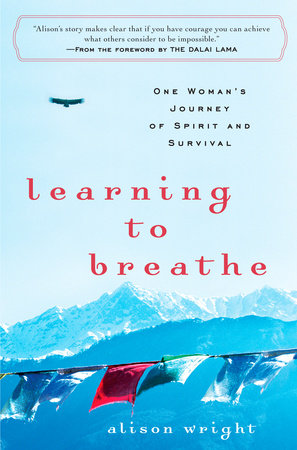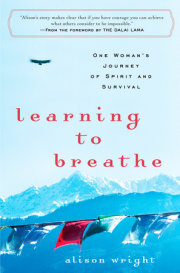Introduction"One step at a time, one breath at a time" is my mantra as I struggle up the snowy 18,700-foot Dolma pass, icy wind whistling around my head and searing my lungs. My stomach churns and my head aches from altitude sickness, but my spirits are buoyed by the Tibetan pilgrims who trudge with me on this sacred thirty-three-mile circumambulation of Mount Kailash, the holiest peak in Tibet.
Despite the cold and the blinding snow, I stop at the crest of the pass to rest and have a warm drink. Pungent incense wafts through the thin air. I join my companions in adding to an array of prayer flags, which whip so hard in the wind they sound like horses' hooves drumming the ground. Each color symbolizes an element: earth, fire, water, and lung, or wind. We tie flags to lines strung up at the mountaintop, so prayers will blow to the heavens. Kneeling, I make an altar by propping up photos of Claire, Hannah, and Erin—my three young nieces—with the colorful hand-painted rocks they gave me to leave at the pinnacle of my pilgrimage.
Both Buddhists and Hindus believe Mount Kailash to be the center of the universe. It is considered so powerful that simply visualizing loved ones here will bring them good fortune. Circling it is said to cleanse one's karma: each circumambulation inches you closer to nirvana and washes away a lifetime of sins. As I plod along, I can see pilgrims scattered along the path far ahead and far behind me, some of them creeping along one prostration at a time. It is humbling to be surrounded by such unwavering faith and devotion.
Even as my lungs labor and my legs protest, I feel a huge wave of gratitude wash over me, a prayer of thanks that I'm alive and that I've recovered the strength to make this journey. Many Tibetans save for years and travel hundreds or even thousands of miles to perform the kora, this ritual trek around the mountain. But for me, this is more than the fulfillment of a fifteen-year dream. Every step is a celebration of the life I nearly lost and a symbol of the physical and emotional challenges I've faced in my long, arduous healing.
I am a photographer. I have spent a lifetime immersed in other cultures, documenting the human condition in a quest to understand the world around me. Living in Asia has led me to insightful encounters with the Dalai Lama; Aung San Suu Kyi, living under house arrest in Burma (the politically correct name for the country that the military junta, her captors, have attempted to rename Myanmar); and Thich Nhat Hanh, a Vietnamese monk and teacher who for years was exiled from his country. I admire their courage and fearlessness.
I aspired to develop their attributes of wisdom and compassion in my own heart while documenting the human dramas and devastating social conditions—the poverty, disease, and suffering—unfolding around me. I strived to find a way to balance my not-so-subtle yearning for a sense of inner peace while bearing witness to life's atrocities and injustices.
Apparently, the universe felt I needed more than a gentle nudge. In fact, it took the impact of a one-ton logging truck to find it.
Copyright © 2009 by Alison Wright. All rights reserved. No part of this excerpt may be reproduced or reprinted without permission in writing from the publisher.










